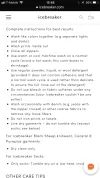D
Deleted member 67185
Guest
I love Merino wool socks and base layer garments. Merino wool socks and wearables, like base layer tops and bottoms, have terrific properties. They are adaptive to both heat and cold; they are exceedingly breathable; They are tough; they are resistant to smelly, bacterial growth; and they can sustain their wearability over a prolonged period of active wear between washings.
When on a prolonged, multi-week backpacking trip, with the issues of washing clothing in backcountry wilderness, the relative ease of care and extended time between washings for Merino wool is appreciated. And yes, even though it is wilderness and solitude, the 'smelly factor' of Merino wool vs synthetics is superior. My Capilene base layers can become very smelly with a day's hard work and sweat, where Merino wool can go days before the skunk factor starts to set in.
On Camino, I do not suggest skipping laundry chores, which are relatively quick and easy as opposed to wilderness backpacking. But I do like the fact that if I am just too tired to want to deal with laundry for a day, my Merino wool is not going to create offense to my fellow pilgrims. My farting might, but not my socks.
Eventually, though, even Merino wool requires washing and drying. These are some basic rules that can preserve Merino wool’s quality.
When on a prolonged, multi-week backpacking trip, with the issues of washing clothing in backcountry wilderness, the relative ease of care and extended time between washings for Merino wool is appreciated. And yes, even though it is wilderness and solitude, the 'smelly factor' of Merino wool vs synthetics is superior. My Capilene base layers can become very smelly with a day's hard work and sweat, where Merino wool can go days before the skunk factor starts to set in.
On Camino, I do not suggest skipping laundry chores, which are relatively quick and easy as opposed to wilderness backpacking. But I do like the fact that if I am just too tired to want to deal with laundry for a day, my Merino wool is not going to create offense to my fellow pilgrims. My farting might, but not my socks.
Eventually, though, even Merino wool requires washing and drying. These are some basic rules that can preserve Merino wool’s quality.
- Turn socks inside out. For other wool garments, like a sweater or base layer, the same applies.
- If using a washing machine, use the gentle cycle in cool water. Hot water can shrink wool and make fibers brittle.
- Use a mild soap or a Woolite-type product. Do not use any bleach which will destroy the wool fibers. Do not use fabric softener which can create a coating on the fibers and reduces the wool’s abilities to deal with moisture and regulate body temperature.
- Air drying is best for Merino wool. Alternatively, use the ‘air’ or ‘no heat’ setting on the dryer. Different manufacturers will have differing directions, so check the ‘care label’ that came with the socks or garment.
- Although Merino wool is not itchy to most people, heat from hot water and drying can make the fibers brittle causing them to ‘break’. This can make the Merino wool itchy.
- Do not dry in direct sun. Both the heat and UV will damage the wool fibers.
- Hanging socks to dry is not a problem. Keep in mind that hanging a garment to dry, though, like a sweater or base layer, can cause it to stretch or become misshapen. The weight of the water retained in the just rinsed garment has a lot to do with this, so gentle wringing out of excess water can help. Just be very gentle and do not try to wring it as dry as possible.


















